Dealing with dampness at home is a miserable task, and it can be an expensive one. If left unchecked, rising and penetrating damp can wreak havoc on external walls and the inside of your home.
However, if you act quickly, and effectively, dealing with damp doesn't need to be expensive. You might be shocked at the damp proofing cost you pay when dealing with all manner of dampness.
At DryCore, we are here to support you in understanding the full cost of a damp proofing course, and additional costs that deal with penetrating damp and external walls, and we make sure you know the benefits and value for money associated with the best damp proof course.
As examined elsewhere on-site in more detail, there is a lot of information about the full damp proofing cost, and a quick overview, by Checkatrade, is available below:
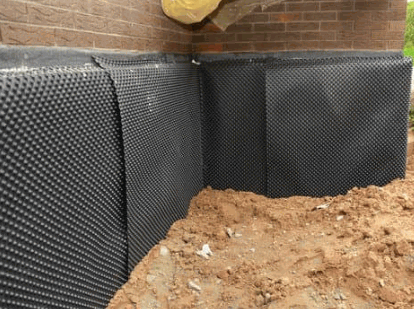
Now, it might be that you don't need to worry about the full damp proofing cost, not if all you need is a damp proofing course. With respect to damp proof course cost, Checkatrade cites the following average costs for property types:
Of course, there are many factors that go into damp proof course cost, so be sure to arrange various quotes when considering damp proofing prices. A higher proofing cost is not necessarily an indicator of quality, and some quotes will likely provide far better value for money in the short and long term.
At DryCore, we are more than happy to take you through damp proofing costs with our damp proofing cost guide and help you determine what represents value with respect to damp proofing prices. No matter the cost of damp proofing, we are here to help you find value when damp proofing your home.
Dampness is a common problem that can affect buildings of all types, ranging from residential homes to commercial structures. It occurs when moisture infiltrates the building's walls, floors, or foundations, leading to various issues such as mould growth, rot, and damage to the overall structural integrity.
To prevent these problems, a DPC is installed during construction or retrofitted in existing buildings as an effective barrier to all types of damp.
A DPC acts as a protective layer, typically made of impermeable materials, inserted into the building's fabric at a strategic height. Its purpose is to inhibit the upward movement of moisture from the ground, preventing it from seeping into the walls or floors and causing dampness.
By creating a barrier against moisture, the DPC safeguards the building's structural elements and helps maintain a healthy living environment. To learn more about what is a damp proof course, take a look at our post.
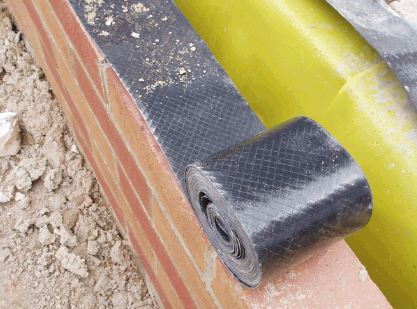
DPCs are particularly essential in areas with high groundwater levels, where moisture can easily penetrate through the foundation or walls. They are commonly found in buildings constructed in areas prone to dampness, such as near bodies of water or in regions with heavy rainfall. For more information, check out our post “What Is Damp Proofing".
The primary function of a DPC is to prevent rising damp, which is the process whereby moisture travels upwards through capillary action. Groundwater or moisture from the soil can contain salts and other contaminants that, when absorbed by building materials, can lead to degradation and structural issues over time.
The DPC acts as a physical barrier, blocking the upward movement of moisture and preventing its detrimental effects.
Damp proof courses can be made from various materials, including:
Bitumen-based DPCs are composed of asphalt-like materials. They are often used in older buildings or as a retrofitted solution due to their durability and resistance to moisture penetration.
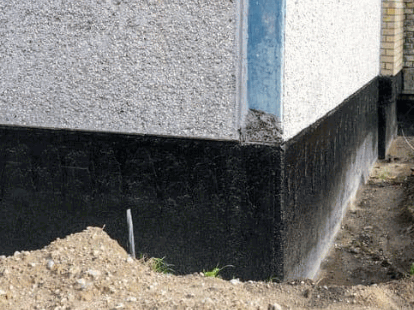
Plastic DPCs are flexible and resistant to moisture. They are commonly used in modern construction and are available in the form of sheets or membranes that can be easily installed.
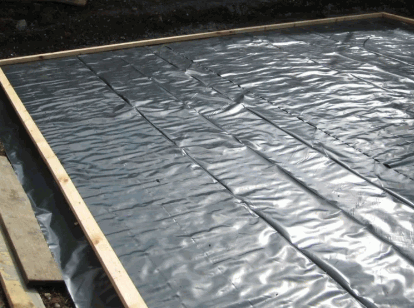
Metal DPCs, typically made of stainless steel or aluminium, are less common but offer high durability and resistance to moisture. They are often used in industrial or commercial settings.
Chemical DPCs, such as silicone creams or injection fluids, are applied directly to the affected area. These substances create a damp-proofing barrier within the masonry, effectively preventing moisture from rising.
The selection of the appropriate DPC material depends on factors such as the building's construction, environmental conditions, and the severity of the moisture issue. A qualified damp proofing specialist can assess the specific requirements and recommend the most suitable DPC type for optimal performance.
It is worth noting that while a DPC provides effective protection against rising damp, it is not designed to address other types of damp, such as condensation or penetrating damp. Condensation and penetrating damp require different remedial measures and should be assessed separately.
In the context of construction, DPC refers to a barrier or layer inserted within a building's walls, floors, or foundations to impede the upward movement of moisture. It acts as a physical barrier to prevent groundwater or moisture from penetrating into the building's structure. The DPC is typically placed at a strategic height, often below ground level, to ensure effective protection against rising damp.

Given the impact of a successful installation and the problems which arise if there are issues with installation, it is best to hire a damp course professional to install it for you. A professional with experience in damp proofing techniques and installation saves time and money while providing you with peace of mind over the quality of the work.
Also, DPC professionals have access to specialist tools and equipment, which DIY aficionados don’t have.
The longevity of a damp course depends on various factors, including the type of damp-proofing method used, the quality of installation, and the environmental conditions the building is exposed to. Generally, a well-installed DPC can last for several decades, providing reliable protection against rising damp. However, it is essential to conduct periodic inspections and maintenance to identify any signs of deterioration or damage that may compromise its effectiveness.
An internet search of various UK specialists, including Checkatrade, Timberwise, and various forums suggests a professionally installed DPC can last for at least 20 years. In this regard, you can consider damp proofing costs over a longer period, which will help you find better value for money.
Several types of DPC methods are available to address different construction requirements and conditions. Arranging a damp survey can help determine the issue, which makes it easy to take the next step. Understanding the range of damp proofing treatments can help in choosing the most suitable approach for damp-proofing a building.
A damp meter, also known as a moisture meter, is a device used to assess the moisture content in various building materials. It aids in identifying areas prone to excessive dampness, allowing for targeted treatment and effective damp proofing.
Its cost is relatively low with respect to damp proofing costs. Damp meters are typically affordable and widely available for purchase.
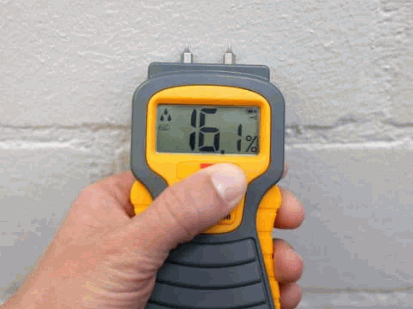
Damp proof cream is a widely used damp-proofing method that involves the application of a cream-like substance directly onto the affected area. The cream penetrates the wall, forms a barrier, and inhibits moisture from ascending through the structure. DPC cream offers ease of application and is suitable for various wall types.
It has a lower damp proofing cost than most other methods, and DPC cream is available in various price ranges, depending on the brand and quantity required.
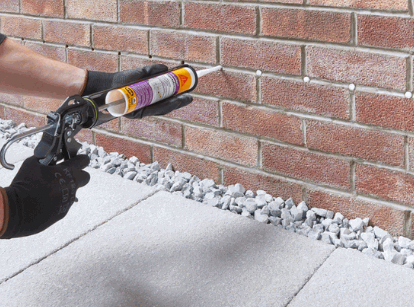
DPC rods, also known as damp-proofing rods or damp-proofing capsules, are solid rods infused with a chemical damp-proofing agent. These rods are inserted into pre-drilled holes in the wall, where they release the moisture-repelling substance, forming an effective damp-proof barrier.
While the cost of DPC rods can vary depending on the brand and quantity needed, they typically fall within a moderate price range.
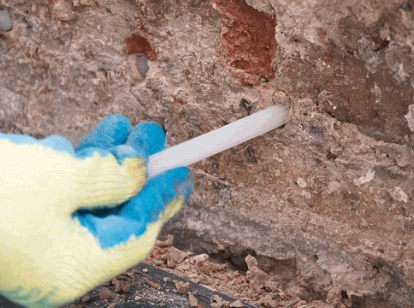
Retrofitted DPC is a damp-proofing method applied to existing buildings that lack an adequate damp course. It involves the installation of a physical barrier, such as a membrane or a combination of damp-proofing materials, to address the issue of rising damp in older structures.
The cost of retrofitted DPC can vary significantly based on factors such as the size of the area, accessibility, and the specific materials used. The damp proofing cost of a retrofitted DPC falls into a higher price range compared to other damp proofing methods.
An existing damp course, even properly installed, is only likely to work well for around 20 years. This means damp proofing your home is something you might do a couple of times, so you cannot fully eradicate damp problems.
Injected DPC involves drilling holes into the affected wall and injecting a specialist damp-proofing solution. This method creates a continuous barrier within the wall, preventing moisture from rising. It is a popular and effective technique for treating rising damp.
The cost of injected DPC is typically higher compared to other methods due to the expertise required, equipment costs, and the specific damp-proofing solution used.
No matter your budget, there are damp proofing costs that fit your budget, but the most important thing is finding the most effective damp proof treatment that works for you.
A failed DPC can have detrimental effects on a building, allowing moisture to penetrate the walls and causing dampness-related problems. It is essential to be aware of the signs and symptoms that indicate a failure. Recognising these indicators promptly can help in identifying and addressing damp-related issues before they worsen.
There is nothing worse in life than paying for a product or service that doesn't work, depriving you of value. Therefore, when working out what is right for you with respect to damp proofing cost, you need to spot if the damp proofing service has helped you or not.
One of the most common signs of a failed course is the appearance of damp patches or staining on interior walls. These patches typically manifest as areas where the wall loses colour, often accompanied by a musty odour. The dampness may be more noticeable at the base of walls, near the floor, or along skirting boards.
Taking the time to check your wall surface to see if it is slightly damp can help you resolve a penetrating, condensation damp, or rising damp problem quickly, and effectively.
Another indication of a failed course is the presence of mould or mildew growth. Excessive moisture provides an ideal environment for mould to thrive, resulting in unsightly black or green patches on walls, ceilings, or even furniture. Mould growth not only damages the aesthetics of a space but can also pose health risks, particularly for individuals with respiratory conditions or allergies.
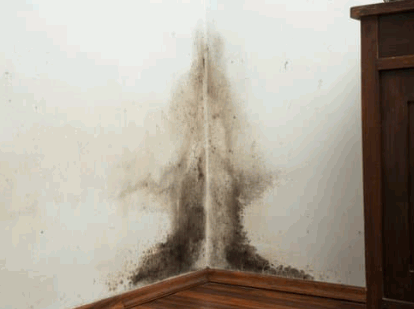
Peeling or bubbling paint and wallpaper can also be signs of a compromised DPC. As moisture infiltrates the walls, it can cause paint or wallpaper to lose adhesion, leading to blistering, bubbling, or peeling. These issues can occur in localised areas or spread across larger surfaces.
A musty or damp smell is another indication of a failed course. Persistent unpleasant odours, particularly in enclosed spaces or rooms with poor ventilation, may be a sign of excessive moisture and dampness. This smell is often caused by mould growth or the presence of stagnant water within the walls.
In severe cases of DPC failure, visible signs of damage to the building's structure may become evident. This can include damp plaster, excess plaster, cold surfaces, rotting skirting boards, deteriorating plaster or mortar, crumbling brickwork, or rotting timber elements.
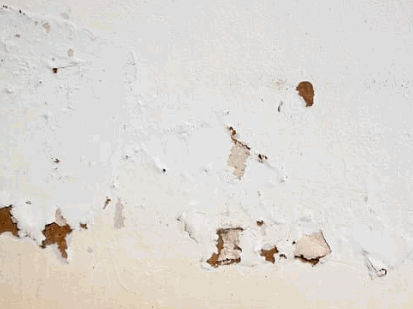
These structural issues are typically the result of prolonged exposure to moisture, compromising the integrity of the building. Re plastering work or dealing with failed cavity wall insulation adds more expense to deal with, which means knowing how much damp proofing costs is an ongoing process. Our post "How Soon Can You Plaster After Damp Proofing" maybe interest you. You can check it out.
It is important to note that while the presence of these signs may indicate a failed course, other factors such as plumbing leaks, condensation, or defective gutters can also contribute to dampness issues. Consulting with a professional damp proofer or a damp proofing contractor is recommended to accurately diagnose the cause of the damp issue and determine the appropriate course of damp proofing work.
Damp proofing external walls is a crucial step in preventing moisture infiltration and safeguarding the structural integrity of the building. Various methods can be employed for this purpose, including applying a damp proofing coating or render, installing a damp proof membrane (DPM), or utilising external wall insulation systems.
When you damp proof your home, you need to cover the interior and exterior walls. However, external work might add to the damp proof course cost. For more learnings, you can check out our post "How To Damp Proof A Wall".
The duration of a damp-proof course installation depends on factors such as the size of the area, the chosen method, and the extent of any underlying repairs required. A professional damp-proofing specialist can provide a more accurate estimation after assessing the specific conditions of the building.
However, general consensus in the damp proofing industry is that a full damp proof course job for a three-bedroom semi-detached property is likely to take three or four days.
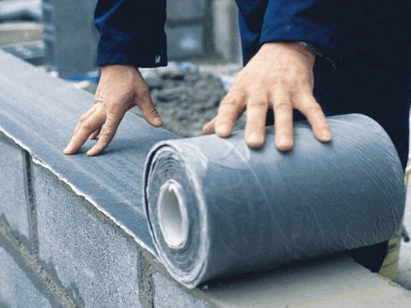
To effectively prevent rising damp, a DPC is strategically positioned within the structure of a wall. Typically, it is installed above ground level, several inches higher than the external level. This placement ensures that the DPC acts as a reliable barrier against the upward movement of moisture from the ground.
The course is typically installed horizontally within the masonry of the wall. In new constructions, it is often incorporated during the initial building process. For existing buildings, it can be retrofitted by creating a horizontal channel within the masonry at the appropriate height.
The specific location of the DPC may vary depending on factors such as building regulations, construction methods, and regional practices. However, the general aim is to position the DPC at a height that effectively blocks the capillary action of moisture absorption, which causes rising damp.
The height at which the DPC is installed is determined by various considerations. It should be placed high enough to prevent moisture from rising through the walls but low enough to avoid trapping moisture below it. A typical height for the DPC is between 6 and 8 inches (15-20 cm) above the external ground level, although this may vary based on factors such as local climate and site conditions.
In addition to horizontal DPCs, vertical damp proof courses may also be incorporated in specific areas of the building, such as cavity walls or where walls intersect with the ground. These vertical DPCs are typically installed at junctions and openings to prevent lateral movement of moisture.
It doesn't matter what type of property you have, be it a semi-detached house, a flat, or terraced house, these guides for placing a DPC are universal when dealing with a damp problem.
In situations where traditional DPC installation is impractical or not feasible, alternative methods such as cavity drainage systems or the use of damp-proof membranes can be considered. These alternatives provide effective moisture control and prevent dampness from compromising the building's structure.
Understanding the difference between a DPC and a damp proof membrane (DPM) is essential for effective moisture control in buildings. While both serve the purpose of preventing moisture-related issues, they differ in their application and scope of protection.
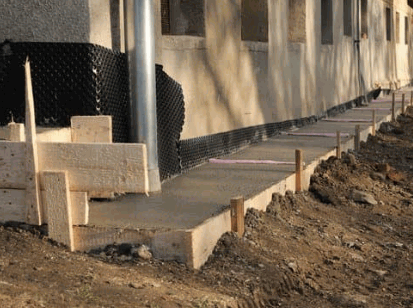
A DPC is a physical barrier that is integrated into a building's construction to impede the rise of moisture. It is typically installed horizontally within the walls, floors, or foundations of a building. The primary function of a DPC is to prevent rising damp, which occurs when moisture from the ground is drawn upward through capillary action.
By creating a barrier, the DPC blocks the movement of moisture, protecting the structure from dampness-related problems. DPCs are specifically designed to address rising damp and are typically positioned above ground level, several inches higher than the external floor.
On the other hand, a damp proof membrane is a flexible sheet-like material that is installed within floors, walls, or roofs to prevent moisture penetration. Unlike a DPC, which focuses on rising damp, a DPM provides broader moisture protection by acting as a barrier against various sources of moisture.
Damp proof membranes are commonly used in areas prone to dampness, such as basements, bathrooms, or areas with high humidity levels. They are particularly effective in preventing the ingress of water vapour, preventing it from permeating through surfaces and causing issues like condensation, dampness, or mould growth. For more learnings, you can check out our post "How To Install Damp Proof Membrane On Concrete Floor".
Waterproof membranes can be made of various materials, including polyethylene, bitumen, or butyl rubber. They are designed to be flexible, allowing for easy installation and compatibility with different surfaces. DPMs are often applied beneath flooring materials or behind wall coverings, serving as a protective layer that prevents moisture from entering the living or working spaces.
There is no single damp treatment process that covers every problem or will prevent damp walls or floors. All damp proofing jobs should be evaluated on individual merits and with damp problems treated professionally, you can be confident about fixing rising damp, and other types of damp including condensation and penetrating damp.
The vast majority of home insurance policies don’t provide compensation for rising damp damage. You should always check the terms and conditions of your insurance policy, but it is unlikely an insurance provider will assist you in managing the cost of a course.
No matter the type of damp you are dealing with, an effective damp treatment offers confidence and peace of mind. Preventative damp proof solutions are best, stopping damp rising and halting damp problems before they begin, but that isn't always possible.
Leaving damp untreated isn't a solution, but with help from DryCore, you know how much does damp proofing cost, and how effective a preventative damp proof course can be.
When it comes to damp proofing walls and floors, and finding the most effective rising damp treatment cost, we have everything you need, so contact us and we'll ensure you have the finest damp proofing installed.